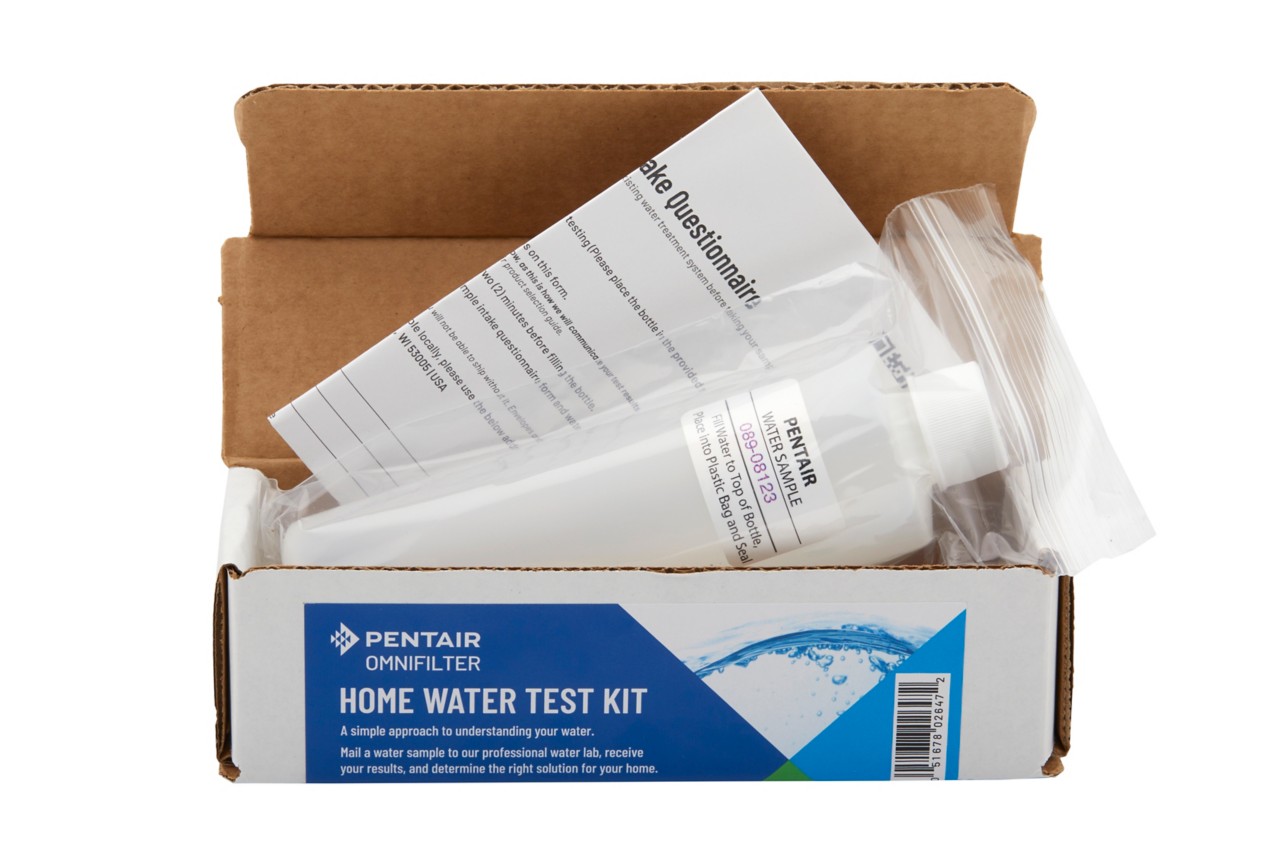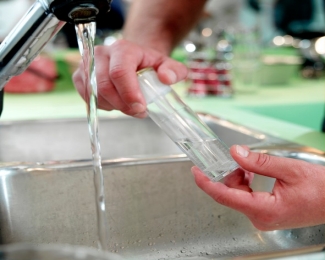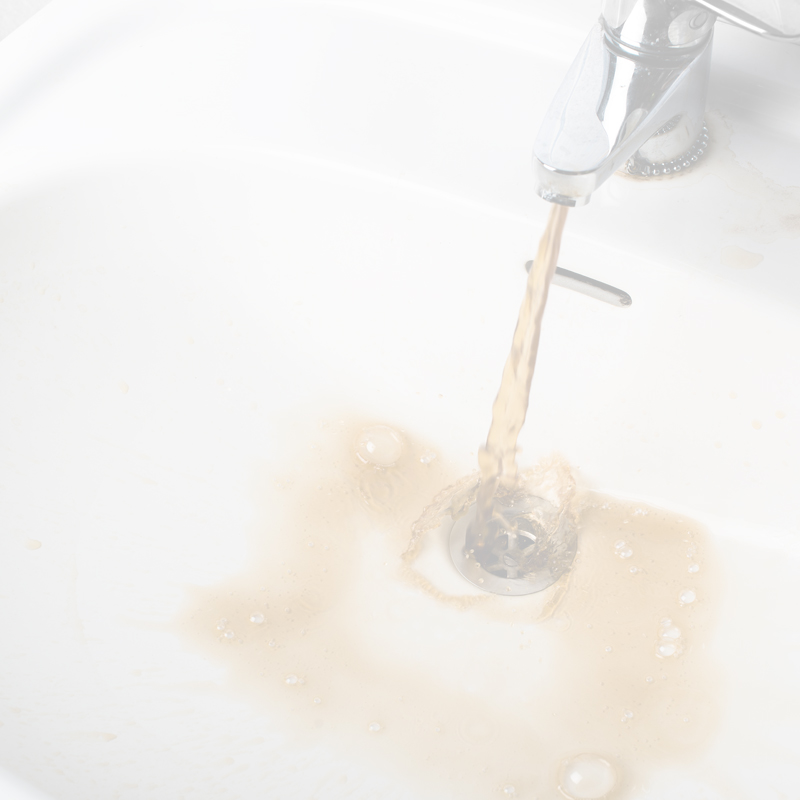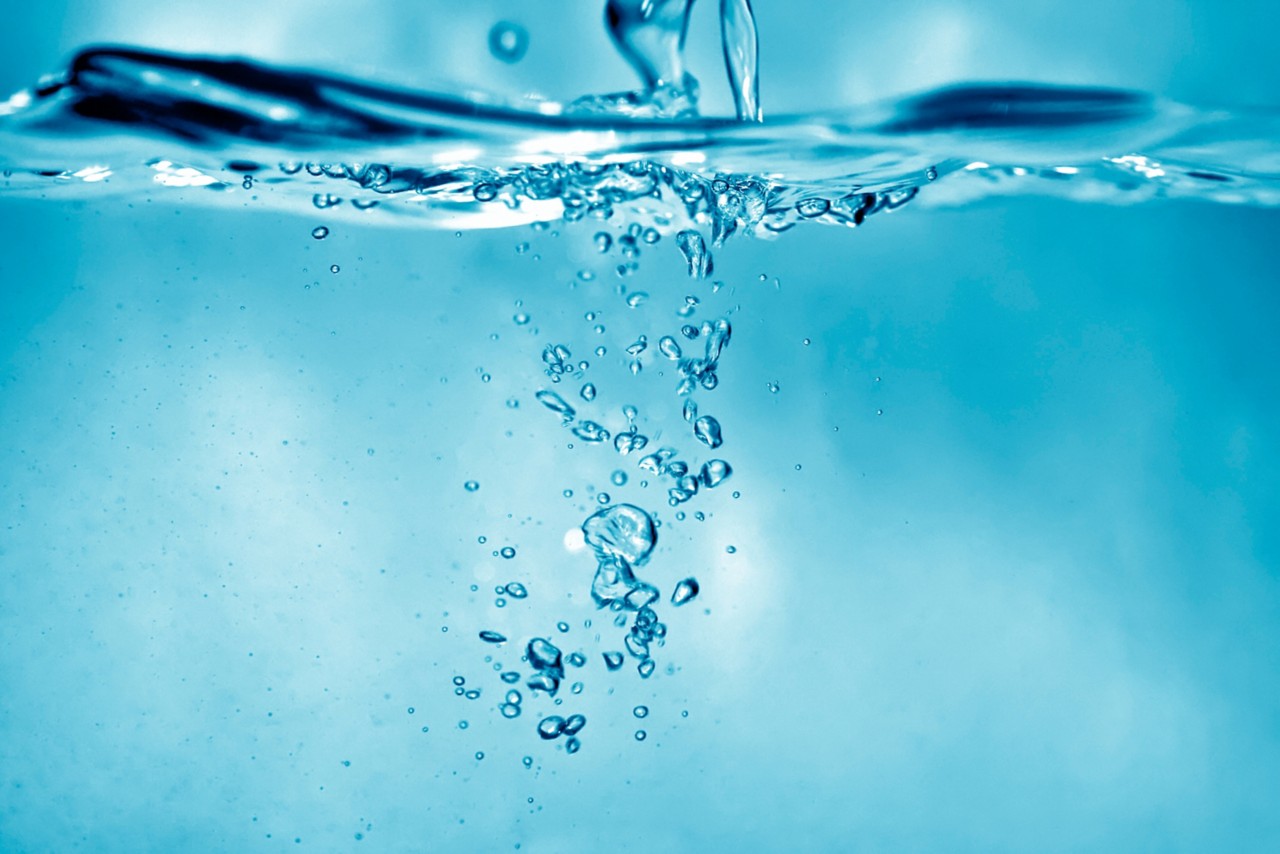Stop Wasting Water and Money. FIND A LOCAL PRO
Iron: it’s part of your balanced diet. According to the National Institutes of Health, managing your iron intake helps you develop strong connective tissue and muscle metabolism. When it comes to red meat or leafy greens, iron is your golden ticket.
However, iron content in your water can feel more like you’ve stumbled into Willy Wonka’s tunnel of nightmares. Red stains, sludge, and a foul odor can sour even the most vocal iron advocate. How do you know when there’s too much iron in your water, and how do you remove it?
Signs of High Levels of Iron in Your Water
According to World Atlas, iron makes up about 5% of the Earth’s crust, so it’s easy enough for some amount of that heavy metal to leach into water supplies through rock and soil. As reported by the Illinois Department of Public Health, here’s what you should look out for if you suspect high levels of iron in your water:
- Discoloration – When your water contains iron, you won’t see glistening, clear water. Your water will often have a yellow, brown, or red hue as it flows from the tap.
- Plumbing Clogs – Iron leaves behind a residue in the form of sludge. High iron levels can quickly clog pipes and pumps with telltale reddish slime. Check your pipes, and be wary of decreased water pressure.
- Disagreeable Taste – If you’ve ever cut your lip and tasted blood, you’re familiar with the metallic taste that iron creates. Iron can alter your drinking water’s taste and smell and the food you wash or cook in the iron-tainted water. Veggies can wilt and turn dark as you boil them.
- Iron Stains – Iron concentrations as low as 0.3 milligrams per liter (mg/L) can leave behind red and brown stains on your fixtures, plumbing, laundry, and dishware. These stains are difficult to remove.
We are water Experts
Water quality is non-negotiable. To prove it, we've built state-of-the-art water quality labs and filled them with the best and brightest scientists — all so we can provide you with the best water of your life.

The Effects of Iron in Your Water
The Environmental Protection Agency (EPA) classifies iron as a secondary drinking water contaminant. Contaminants grouped in this category aren’t an immediate cause for alarm – you don’t need to run out to urgent care if you discover iron in your water.
However, this means that iron, and other secondary contaminants, can cause aesthetic issues and technical effects like pipe corrosion. Importantly, the EPA notes that contaminants like iron can carry “dissolved organic material” with them as they travel through pipes. No one wants bacteria or organic compounds piggybacking on iron and ending up in their glass of drinking water.
Plus, iron’s aesthetic effects can cause plenty of frustration. As we mentioned, the dark stains from iron spotting are tough to treat. Iron contamination can have the same effects as hard water, creating soap scum and making detergents less effective. Slime can render your pipes useless. Your family is better off tackling the issue of high iron content before it gets out of hand.
How to Test for Iron in Water at Your Home
Different types of iron may find their way into drinking water: iron bacteria, dissolved ferrous iron, or insoluble red water ferric iron. To make a plan for your iron treatment, you should solve the mystery of how much total iron is present first.
We have a Water Test at Pentair Water Solutions that tests for total iron and other common contaminants, including arsenic, lead, and total dissolved solids (TDS). Collecting a water sample and receiving your water profile is simple and convenient.
Collect your tap water sample and ship it back to us. Don’t worry; return shipping is included! You should receive your results in three-to-five business days.
What's in your water?
start here
Worried about your water? Take control with our at-home water test kit. We'll analyze your water and recommend the best filtration or softening solution for your specific needs.


Water 101
Unleash the secrets of your H2O! Explore where water originates and discover the various water filtration solutions that transform it into drinkable water.
Related Articles

Learn About Lead
Lead in water symptoms can be severe. Discover the leading causes…

Learn About Reverse Osmosis
The benefits of reverse osmosis water systems can transform…

Learn About Well Water
There’s a big difference in treatment for well water vs. city. Get the facts …
Disclaimer: The information on this website has not been reviewed by the FDA. Products offered for sale herein are not intended to treat, cure or prevent any disease or health condition. No medical claims are being made or implied. Contaminants mentioned are not necessarily in your water.




